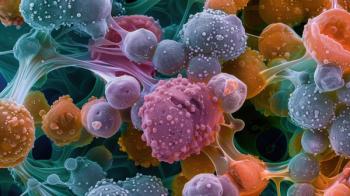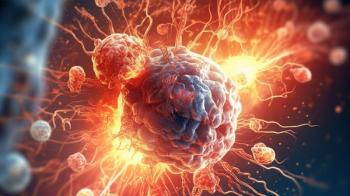
A Mechanistic Approach to Reducing Vasomotor Symptoms in Menopause
Explore the role of pharmacists in managing menopause-related vasomotor symptoms with innovative non-hormonal therapies like Elinzanetant.
This content was independently produced by Pharmacy Times in partnership with Bayer Healthcare.
At the The Menopause Society (TMS) 2025 meeting in Orlando, Lee P. Shulman, MD of Northwestern University Feinberg School of Medicine, discussed how the newest non-hormonal, dual neurokinin-targeted therapies directly address the central nervous system mechanisms underlying vasomotor symptoms—including hot flashes and sleep disturbances—thus offering an effective alternative for women who prefer to avoid hormone-based treatments.
Pharmacy Times: How do sleep disturbances contribute to the overall disease burden and quality-of-life challenges experienced by women with menopause-related vasomotor symptoms?
Lee Shulman, MD: Even in some women who don't wake up in a pool of sweat—which is where the phrase comes from—these hot flashes can awaken women. Anything that can lead to sleep disturbance merits our concern to reduce or eliminate altogether. The mechanisms by which vasomotor symptoms occur in menopausal women merit our understanding.
Until recently, we have primarily used hormones to replace the reduction in hormones that occurs as a result of the menopausal transition. The nonhormonal methods, until recently, have mostly been drugs that reduced hot flashes not necessarily through direct mechanisms but by using certain antidepressants that do reduce hot flashes, though they entail a considerable side effect profile that many women may not wish to entertain.
These new methods, which are again being presented at this year's Menopause Society meeting and were previously developed, provide a direct, mechanistic approach to reducing hot flashes in women who have gone through the menopausal transition.
Pharmacy Times: Did any of the findings from your analysis surprise you or challenge existing assumptions about the effectiveness of non-hormonal approaches?
Shulman: The answer to your question is no, we were not surprised that the dual neurokinin-targeted therapy, which is known as elinzanetant, was effective in reducing the frequency of sleep disturbances. The reason for our lack of surprise lies in understanding the mechanism by which the neurokinin-targeted therapy works at the central nervous system—specifically at the location where many of the vasomotor disturbances actually ensue with the onset of the menopausal transition.
Pharmacy Times: What role can pharmacists play in identifying, recommending, or supporting patients on non-hormonal therapies for VMS who are also struggling with sleep issues?
Shulman: I think it’s important that pharmacists understand the mechanisms by which these neurokinin-targeted therapies work and support clinicians who are providing them. It’s essential to recognize that their mechanism directly and positively impacts the physiological basis for vasomotor symptoms. Additionally, pharmacists should understand that these therapies are completely nonhormonal and therefore do not entail any of the adverse event profiles associated with hormone-related therapies. In this way, pharmacists can provide meaningful support for clinicians who are prescribing these treatments.
One key point to understand—whether we’re talking about pharmacists or clinicians who may not be women’s health care providers but are seeing women in their offices—is that vasomotor symptoms are not just an annoyance. They are often perceived as a minor issue, and I’ve heard far too many patients being told by their referring doctors or clinics, “Oh, just suck it up,” or “Get another air conditioner for your bedroom.” However, it has been clearly demonstrated over the last few decades that these sleep disturbances lead to considerable and profound morbidities and, in fact, earlier mortalities if they are not suitably addressed.
For me, and for many of my colleagues, the source of these increased morbidities and mortality rates stems from the sleep disturbances that result from hot flashes. Therefore, if we have multiple ways of addressing hot flashes effectively, it is incumbent upon both clinicians and pharmacists to help women find a method they can use consistently and correctly. If a woman feels more comfortable using a nonhormonal method, then the consideration of neurokinin-targeted therapies merits serious attention.
Newsletter
Stay informed on drug updates, treatment guidelines, and pharmacy practice trends—subscribe to Pharmacy Times for weekly clinical insights.


















































































































































































































